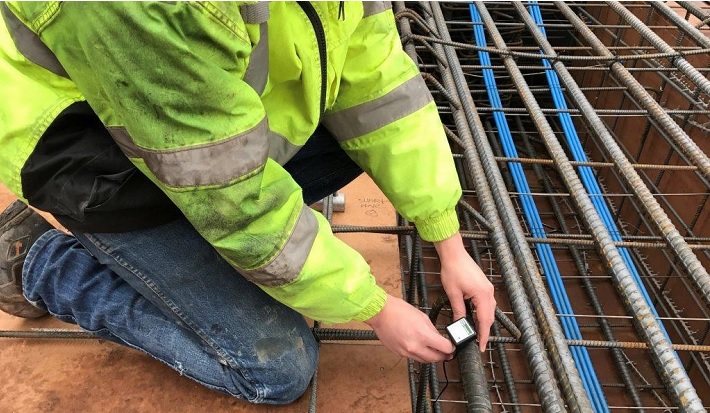By Roberto Nunez, Lecturer and Senior Construction Extension Specialist (Department of Civil Engineering, NC State University)
In response to: Can We Uberize the Construction Industry?
As we know, building codes are only MINIMUM standards. Therefore, within the broad objectives of preserving the life and well-being of users and that of the environment (while fulfilling the obvious demands of performing design work consistent with standards of practice and responsible care), a DESIGNER can and should make every attempt to incorporate technology to satisfy the owner’s need to have a structure that is constructed within set parameters for cost, schedule, quality, risk, and sustainability.
In my experience, many DESIGNERS are making genuine efforts to move the design and construction industry (and concrete industry) towards achieving these goals. As a member of the concrete industry, I believe we are making progress towards durable, smart, and sustainable concrete infrastructure. Like in any other industry, laggards and innovators will co-exist. Very likely, market pressures (at least in the USA) will dictate the business position of industry players. For this reason, I believe that there is an intrinsic motivation for DESIGNERS and CONTRACTORS to adopt new technologies if nothing else to have a pure and simple competitive advantage.
However, the intrinsic opportunity for innovation that one can detect in a typical construction project, is also met with pragmatic (and sometimes traditionally entrenched) limitations and perceptions that our industry players must recognize and then overcome.
For example, many OWNERS (and some DESIGNERS themselves) do not completely understand the VALUE provided by the DESIGNER, through its education, experience, and competence, to produce construction documents while assuming the corresponding risks and responsibility. Simply stated, I believe that DESIGNERS are not compensated enough for their work and responsibility. To complicate this issue, even with the introduction of advanced design/modeling tools, in my opinion, DESIGNERS are now required to perform increasingly more complex work for virtually the same amount of compensation compared to past years. (I like to research and document this statement better, but allow me to make this assumption as I have anecdotal evidence that is statement should be true for the past 50 years; now, please do not stop reading for lack of factual/tangible evidence; this is not another case of “fake news”; please stay with me until I make my point). Furthermore, many owners typically decide to remove DESIGNERS from the field and/or quality observations associated with their own design. Under these circumstances, owners have a DESIGN TEAM that is economically constrained and typically risk averse. This is obviously not a fertile ground to invest design time to research/promote/accept technological innovations from the DESIGN perspective.
How can the above-noted DESIGNER limitations affect the desires for innovation from the CONTRACTORS perspective? The good news is that, in traditional project delivery methods, “means and methods” are still the responsibility of the CONTRACTOR. So, most CONTRACTORS that I know are in constant search for systems and processes that can ultimately enhance the contractor’s COST, SCHEDULE, QUALITY, and RISK/SAFETY while delivering the project within DESIGN requirements that will satisfy the OWNER. The adoption of technologies such as the maturity method can indeed optimise concrete construction in certain projects but needs a validation process to be accepted by DESIGNERS and OWNERS. In my opinion, in addition to facts, validation requires trust among the parties. Unfortunately, in my opinion, trust (especially in a traditional project delivery method) between OWNER/DESIGNER/CONTRACTOR can be easily fractured from the project get-go.
Financially constrained DESIGNERS are not able to produce what I would consider high-quality construction documents (i.e., sufficiently detailed, well-coordinated, well referenced to updated/current specifications, well researched/implied construction systems, incorporating detailed processes/specs to adopt new/alternative technologies). Please review in any construction project, the history of Requests for Information (RFI’s) and you will find evidence that many projects are being designed and constructed “by RFI’s” and that many CONTRACTORS are being put in place of Field Design Coordinators/Managers. This is not a fertile ground for the adoption of new technologies from the DESIGN and CONTRACTOR perspective.
Risk averse (and/or inexperienced) DESIGNERS tend to adopt conservative approaches and protect themselves from any forms of risk. Please review any set of existing project drawings. You will find plenty of evidence (i.e., engineering notes) of DESIGNER risk shifting, risk mitigation, and risk allocation affecting CONTRACTORS. Obviously, this is not the best ground either for the adoption of new technologies from the DESIGN and CONTRACTOR perspective.
What can we do? Well, even though this is a complex problem, we should start with and continue with strengthening our education and communication systems. For example, young design engineers should pursue Master’s degrees (a BS is not enough to expose design engineers to newer technologies and systems that can be later implemented during their careers) and should strive to obtain field work opportunities before undertaking design duties. Young construction engineers should always work in the field for an extended period of time (before attempting other project duties) to better learn and visualize processes and to slowly replace older and traditional superintendents with their energy, experience, and desire for innovation. Young sales engineers should be great factual communicators and educators to enhance owner/designer/contractor knowledge and competency. All engineers and designers, strive and emphasize VALUE brought to any project. As for old engineers like me, remain open-minded and do the best possible to mentor VALUED people and technologies.


